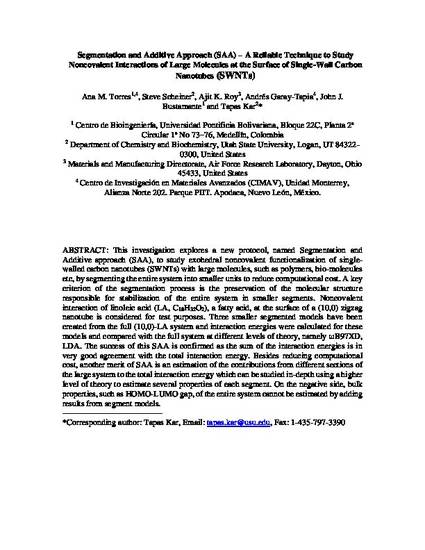
This investigation explores a new protocol, named Segmentation and Additive approach (SAA), to study exohedral noncovalent functionalization of single-walled carbon nanotubes (SWNTs) with large molecules, such as polymers, bio-molecules etc, by segmenting the entire system into smaller units to reduce computational cost. A key criterion of the segmentation process is the preservation of the molecular structure responsible for stabilization of the entire system in smaller segments. Noncovalent interaction of linoleic acid (LA, C18H32O2), a fatty acid, at the surface of a (10,0) zigzag nanotubeis considered for test purposes. Three smaller segmented models have been created from the full (10,0)-LA system and interaction energies were calculated for these models and compared with the full system at different levels of theory, namely ωB97XD, LDA. The success of this SAA is confirmed as the sum of the interaction energies is in very good agreement with the total interaction energy. Besides reducing computational cost, another merit of SAA is an estimation of the contributions from different sections of the large system to the total interaction energy which can be studied in-depth using a higher level of theory to estimate several properties of each segment. On the negative side, bulk properties, such as HOMO-LUMO gap, of the entire system cannot be estimated by adding results from segment models.

This is the peer reviewed version of the following article: Torres, A. M., Scheiner, S. I., Roy, A. K., Garay-Tapia, A. M., Bustamante, J., Kar, T. (2016). Segmentation and additive approach: A reliable technique to study noncovalent interactions of large molecules at the surface of single-wall carbon nanotubes. Journal of Computational Chemistry, 37(21), 1953–1961. http://dx.doi.org/10.1002/jcc.24414, which has been published in final form at https://doi.org/10.1002/jcc.24414. This article may be used for non-commercial purposes in accordance with Wiley Terms and Conditions for Use of Self-Archived Versions.